There are ‘lies, damned lies and statistics’, said the Victorian politician Benjamin Disraeli (allegedly), but numbers and statistics can also help uncover the truth – or at least the facts.
Numbers also mean hard evidence to econometricians, and solicitors who deal with competition and commercial cases are using these specialists increasingly often.
These people’s exotic skills are proving useful in cases where the outcome, or the resulting damages, must be calculated on the basis of what might have been. An econometrician, sometimes referred to as a plain old ‘economist’, works with statistics to discover the probabilities of events and find cause from a mass of potential causes.
For example, if a cartel has been exposed and closed down by the competition authorities, those who were adversely affected by its operations may sue for damages for lost business. They have to prove how much additional business they would have done – or how much less they would have paid for goods and services – had the cartel never existed. But how much of their loss might have resulted from other factors – from chance, or perhaps energy price changes, or from matters under their own control – and how much from the cartel?
Econometricians use sophisticated mathematical techniques to try to make sense of these questions. Their main involvement with the legal profession is in commercial and competition cases, and sometimes in intellectual property, though in other jurisdictions econometricians have appeared in medical negligence and employment disputes.
The expertise needed to produce compelling evidence that helps to carry or defend such cases does not come cheap, and solicitors need to understand what econometricians can and cannot do.
Mike Pilgrem, a director at econometric consultancy LECG, explains: ‘The first thing is to establish whether there is an economic matter involved and whether it would be possible to investigate statistics usefully. One then looks for what information exists or what surveys are needed.
‘We have seen an uplift in the use of these techniques in courts. Tribunals often have econometric information and now there is some leak across into what you might call traditional damages cases, where we see the techniques used in commercial cases.’
Brand on the runOne example given by Meloria Meschi, a principal at LECG, involves brand confusion, where a company has sought to persuade buyers that its products are those of a more reputable rival.
‘The first step would be determining what "the public" means – it’s normally those who would buy the product concerned,’ says Meschi. ‘Out of this, one would need to draw a sample that is representative of the population, because otherwise any inference from the sample would be biased. There are statistical rules as to how to draw such a sample and each person in it would then be interviewed.
‘Questionnaire design is very important – questions should be clear and not leading. The courts are aware of the importance of a well-designed survey. They also appear to be aware of the strength that proper survey evidence lends to a case.’
Some years ago, Meschi worked on cartel cases that concerned the animal feed and vitamin markets, where statistical evidence was used to estimate the ‘but for’ prices – that is, what the prices would have been without the cartels’ existence.
One could look at the trend of prices during the cartel’s life, but what if other factors affected the market, such as energy costs or changes in demand?
‘The only way to account for these changes is using an econometric model where price is ‘explained’ by its various components, and cleaned up of the effects of changes in other factors,’ she says.
But how are lawyers and judges to grasp the finer points of such technical analysis?
Pilgrem says: ‘We usually appear as expert witnesses. It’s our duty to help the court by being able to distinguish what is important so the resources of the court and counsel can be focused on the essentials.
‘You explain carefully the reasoning that leads from one step to the next, avoid jargon and algebra where you can, and think about helpful analogies. I find diagrams are powerful.’
Knowledge of statistical techniques is reasonably common among intellectual property solicitors (who often have a science background), but, Pilgrem says: ‘For some people there is, perhaps, an unspoken concern that statistics can be misused to distort the truth as much as illuminate it in an objective, testable way.’
This leads to some tangential help – interpreting the evidence of other experts in this field and explaining what weight can, or should, be placed on their conclusions.
Gunnar Niels, director of consultancy Oxera, works mainly in cases that concern mergers and abuse of market dominance, or market investigations where ‘it has become fairly standard for there to be a legal and an economic team that will work very closely together to build a robust argument on competitive effects’.
Believe the swipeOne unusual source of data comes from shop checkouts where goods are ‘swiped’ as they are sold, he says. ‘Swipe data gives very detailed information on demand for products and prices, and so gives the economist data with which to work out the relationship between price and demand.’
He says that the expert witness’s duties to both the court and to their client make for ‘an interesting tension’, but one which he thinks is ‘good discipline for the economist, and for the lawyer, who will know that they cannot push the economist too far – but if your case is robust, its presentation will be both in the client’s interest and will assist the court’.
Niels says so-called ‘original actions’, where a litigant will take a competition matter straight to court rather than to the Office of Fair Trading or European Commission, both of which feel they should deal only with the largest cases, are on the increase.
Statistical evidence is also, he says, ‘becoming more used in intellectual property or in any context where damages based on what would have happened need to be established, as a lot of litigation is around patent or trademark infringement’.
Diana Jackson, vice-president of consulting firm CRA International, expects the use of statistical evidence to grow in legal cases, pointing to its use in matters as diverse as calculating the effect on a retailer’s profitability of scaffolding being left to obstruct his premises, the effects on a retailer who invested heavily to sell a product but whose supplier promptly went out of business, and the economic consequences of a mine being out of action due to flooding. ‘Its use is likely to increase with private litigation for compensation following commercial offences,’ she says.
Frontier Economics manager David Parker notes the econometrician’s skill in disentangling cause and effect. ‘Often, we are asked to determine whether a particular action caused a certain outcome,’ he says. ‘Things do happen by chance and it is important to distinguish between genuine causation and chance correlation. If you tossed a coin often enough you would eventually get a run of five or six heads or tails, but that does not necessarily mean there is anything wrong with the coin – there is a probability that such an outcome will happen by chance.
‘There are also situations where multiple factors could have contributed to a certain outcome. We can use statistical techniques to explore whether a certain outcome happened by chance, or which of several competing explanations for a certain outcome is most likely to be the main one.’
The growth of sophisticated statistical techniques in legal cases is being driven by ‘a combination of greater computing power, more familiarity with the relevant techniques, and a greater desire on the part of authorities to request the necessary data from companies that are being investigated’, says Parker.
So the world of regression analysis and bell curves is, it seems, heading for the desks of more solicitors.
Econometrics from the lawyers’ perspective
As Julian Copeman, a partner at Herbert Smith, says: ‘There is a feeling that if one party can get an econometrician in to produce a scientific analysis they will outgun a traditional expert who says "I have 20 years’ experience and a gut feeling about what happened".’
Alastair Chapman, senior associate in the antitrust, competition and trade group at Freshfields Bruckhaus Deringer, says that antitrust regulators have become more economically literate, and good, old-fashioned advocacy is no longer enough to win a case. ‘Advocacy needs to be supported by evidence, and the role of econometrics in providing this evidence can be crucial,’ he says.
Chapman uses economic analysts, in particular in complex cases where the financial consequences of particular courses of action need to be modelled to demonstrate their likely effects, or where an economist can help to define the relevant market.
‘This is a trend that can be expected to continue,’ he says, ‘especially as a growing number of regulatory authorities now have their own teams of economists. Where the other side is also employing an economist, there are likely to be competing sets of complex economics being presented. One of the key skills of an economist is therefore that they should to be able to make their case to their instructing lawyers and clients, and also to regulators and judges, in a way that is both comprehensible and persuasive.’
Freshfields counsel Elaine Whiteford handles many cases where a cartel, or abuse, has been proved and litigation concerns the causes and size of losses. ‘Statistical techniques can be very useful,’ she says. ‘But such work can be expensive and judgements have to be made as to whether the claim concerned justifies that cost.’
Most judges have no specialist knowledge of statistics, and Whiteford also stresses the need for lawyers to consider not merely an econometrician’s expertise, but also their ability to present evidence. ‘Some economists are very good at presenting their evidence clearly and making complex things intelligible,’ she says. ‘Others are not, though I suppose there might be cases where one actually wants to muddy the waters, if the other side is strong.’
Copeman says he would use economists where ‘there is data that can be examined in depth’, but not in cases where the data was not good or extensive enough to justify the cost of analysis. ‘This is an area of expertise that lawyers are increasingly getting used to using and I’m sure we will see more use of statistical analysis,’ he says.
Statisticians have begun to appear in intellectual property cases, the main area outside the commercial and competition field in which their expertise is used.
Stewart Rayment, who runs intellectual property consultancy Lockhart & Hastings, says: ‘In smaller-scale cases, use of economists or statisticians is rare. However, it is difficult to get courts to take full account of costs and damages, and supporting evidence can prove useful. The problem is, at what cost?’
Wragge & Co partner Huw Evans says: ‘Economists are used mainly in intellectual property cases where we have to establish what is "fair, reasonable and non-discriminatory".’ These cases might, for example, involve the content of standards used in the mobile telephone industry to allow different types of phones to communicate. These can include requirements to make use of particular patents, which are made available in return for a royalty.
‘There is a lot of litigation around whether patents are essential to standards,’ Evans says. ‘One company may claim another’s patent is inessential, because if it were they would not need to pay anything. Economists can help in determining a reasonable royalty, and there will be a possible increase in their use as these cases based on "essentiality" become more common.’
Mark Smulian is a freelance journalist







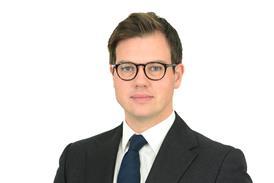
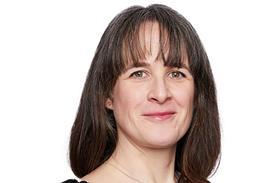
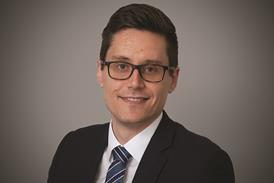


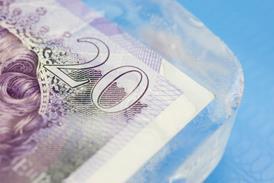




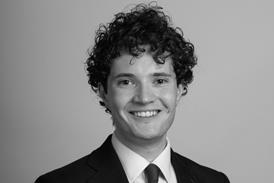
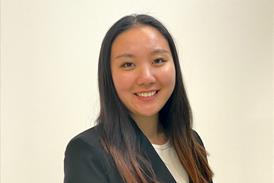
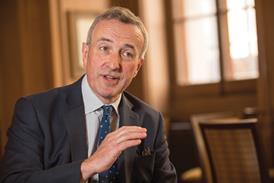







No comments yet